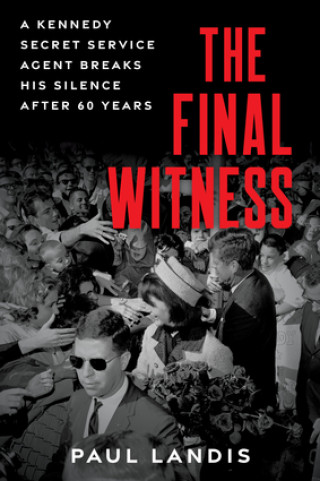Then came November 22, 1963. A month after returning from Greece, Landis stood on the right rear running board of the Secret Service follow-up car, code-named “Halfback,” in the president’s motorcade as the vehicle headed from Dallas’s Love Field airport to a luncheon at the city’s Trade Mart. Landis was approximately 15 feet away when Kennedy was mortally wounded, a close witness to unspeakable horror.
That horror was compounded when the president’s limo reached Parkland Memorial Hospital, where Landis and Clint Hill tried to coax Jackie to release the president, whom, by that point, she had cradled in her lap. Climbing into the back seat area, which had been spattered with blood and brains and bullet fragments, both agents, according to their subsequent accounts, gently encouraged the first lady to let go.
As she did—standing up to follow Hill and another agent, Roy Kellerman, who lifted her husband’s body onto a gurney and raced into the hospital—Landis saw and did something that he has kept secret for six decades, he says now. He claims he spotted a bullet resting on the top of the back of the seat. He says he picked it up, put it in his pocket, and brought it into the hospital. Then, upon entering Trauma Room No. 1 (at that stage, he was the only nonmedical person in the room besides Mrs. Kennedy, and both stayed for only a short period), he insists, he placed the bullet on a white cotton blanket on the president’s stretcher.
This secret, as it turns out, may upend key conclusions of the Warren Commission, the body created by President Lyndon Johnson to investigate the assassination.
The sad fact is that Landis—though required to provide his version of events to the Secret Service (and, in a second report, to what would become the Warren Commission)—never sat for an interview before the FBI and never testified before the commission itself. He left the Secret Service months after the assassination and before the panel had finished its work and issued its report.
Landis, to this day, attests that in the first few years following the assassination, he was simply unable to overcome his PTSD from witnessing the murder firsthand. He says that the mental image of the president’s head, exploding, had become a recurring flashback. He maintains that he desperately tried to push down the memories. He also says he felt unable to read anything in detail about the assassination until some 50 years later, starting in 2014, when he began to come to grips with all that he had witnessed, suppressed, and finally processed.
